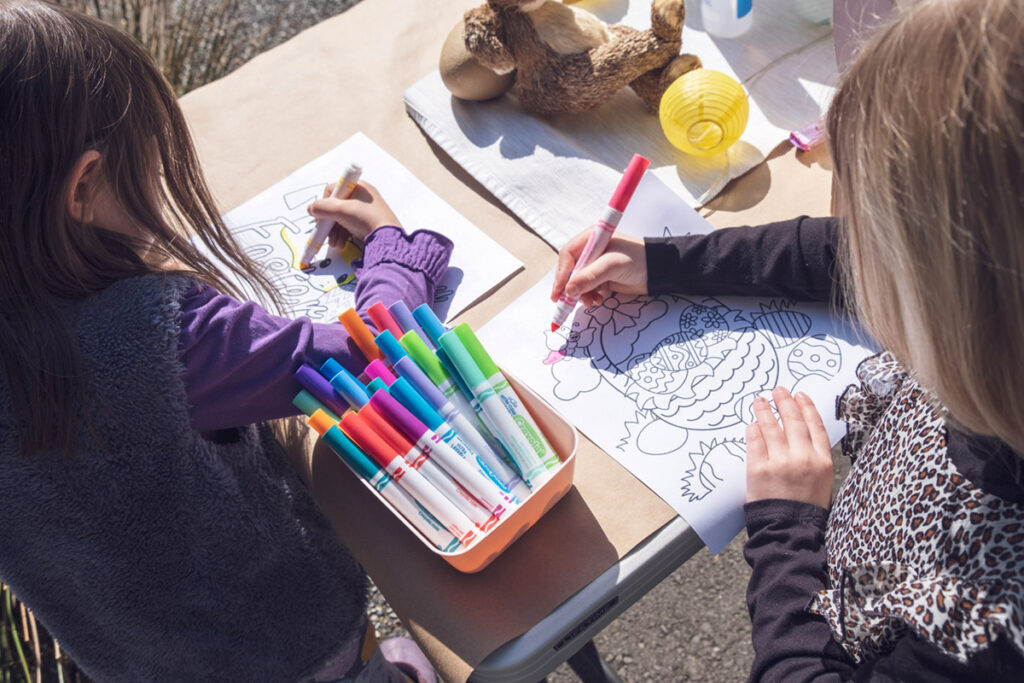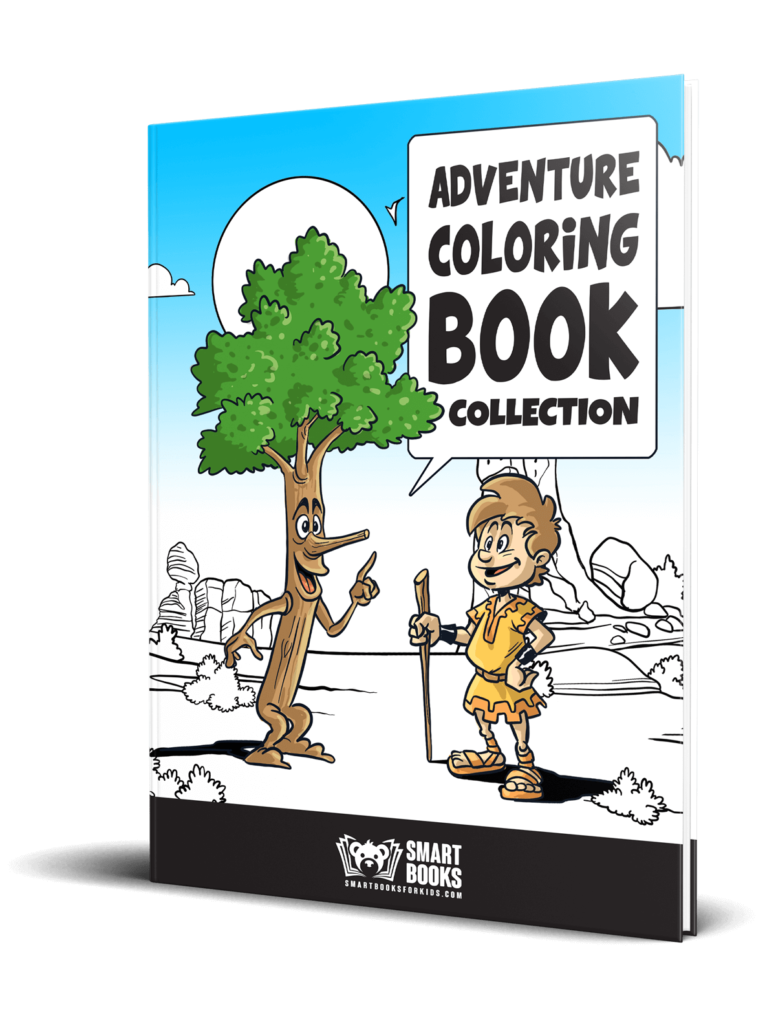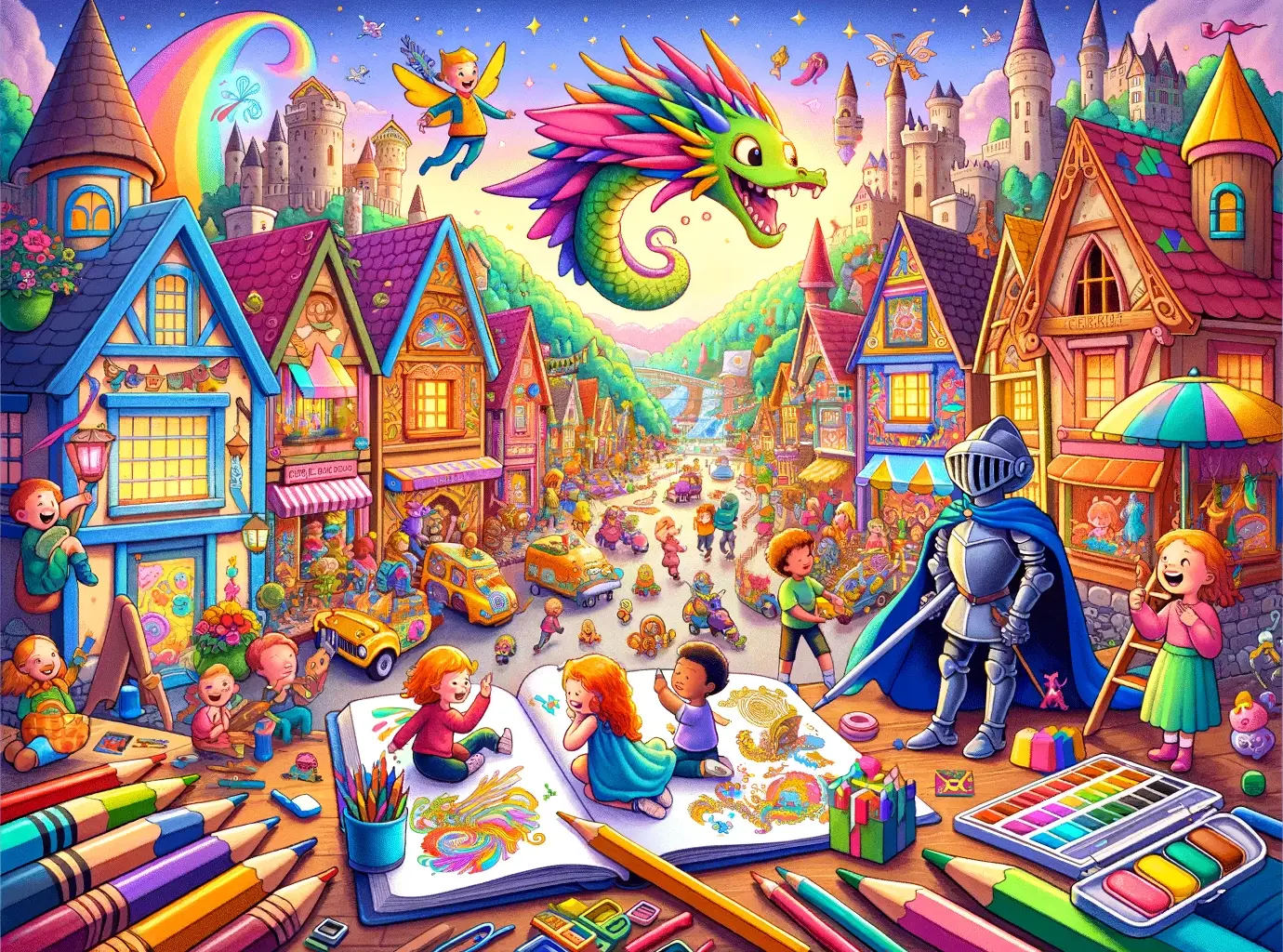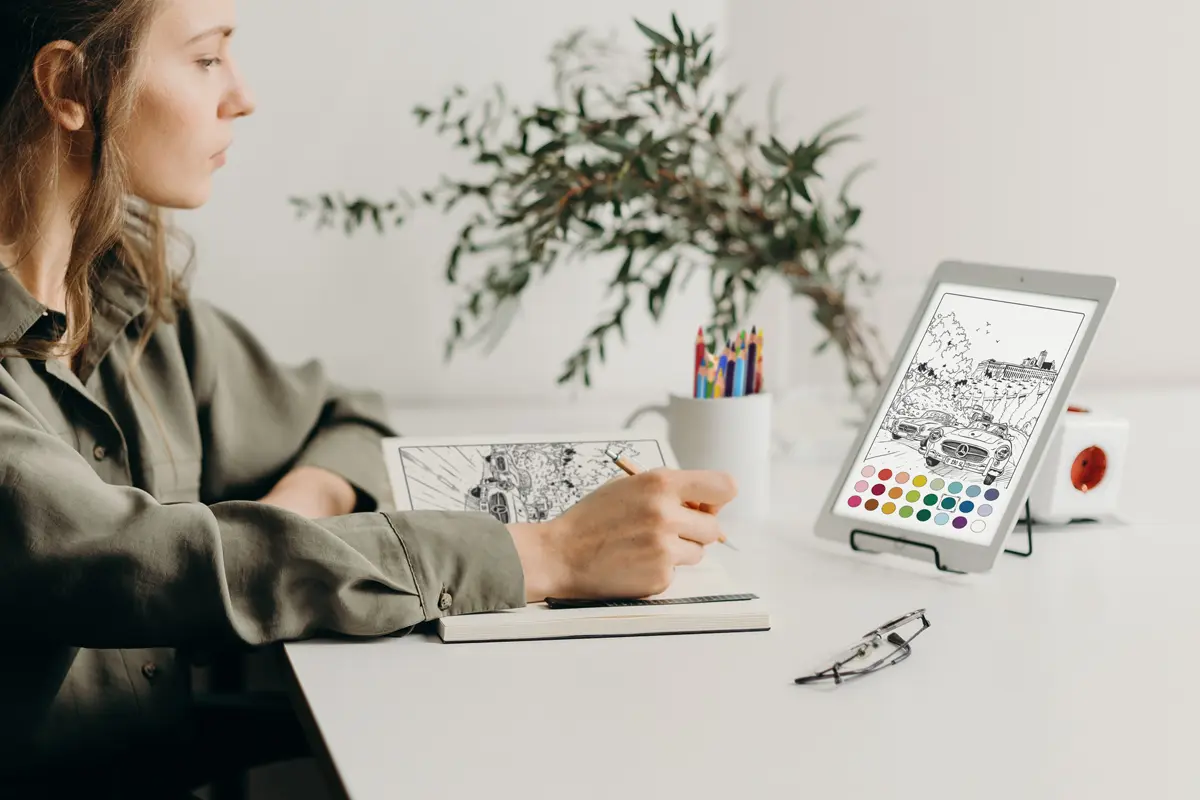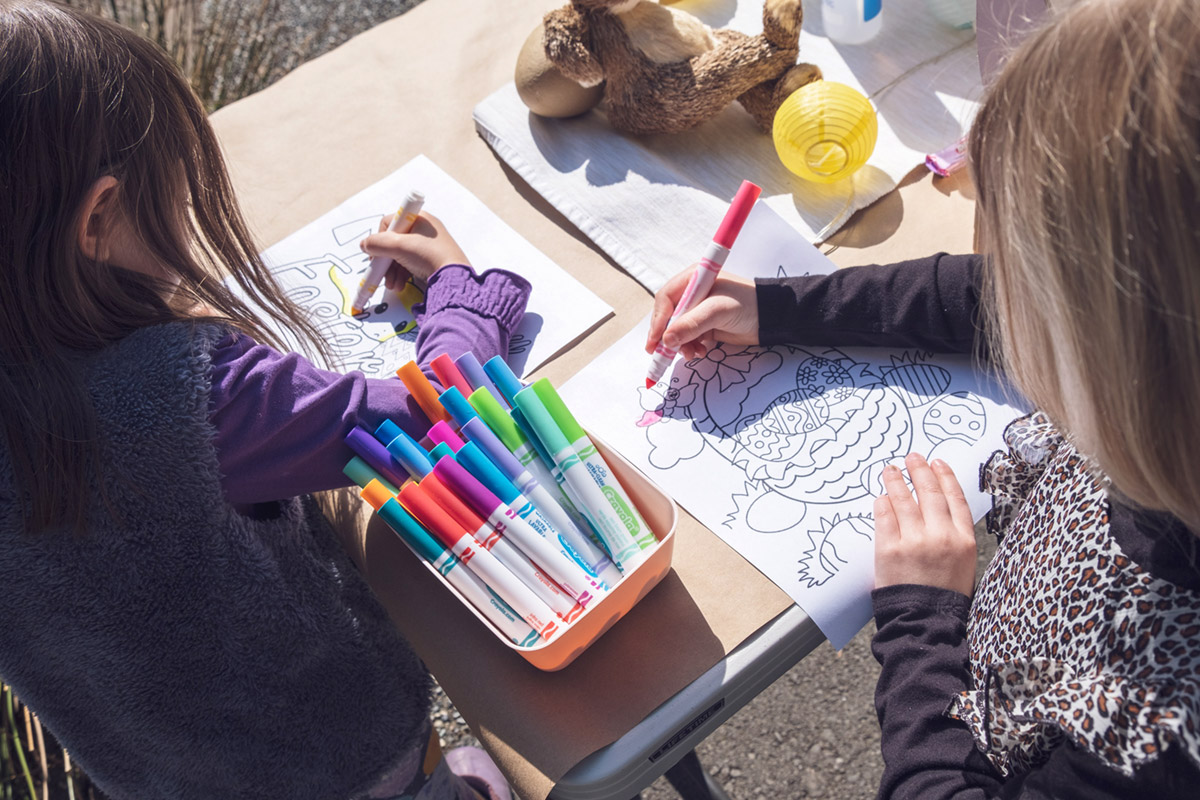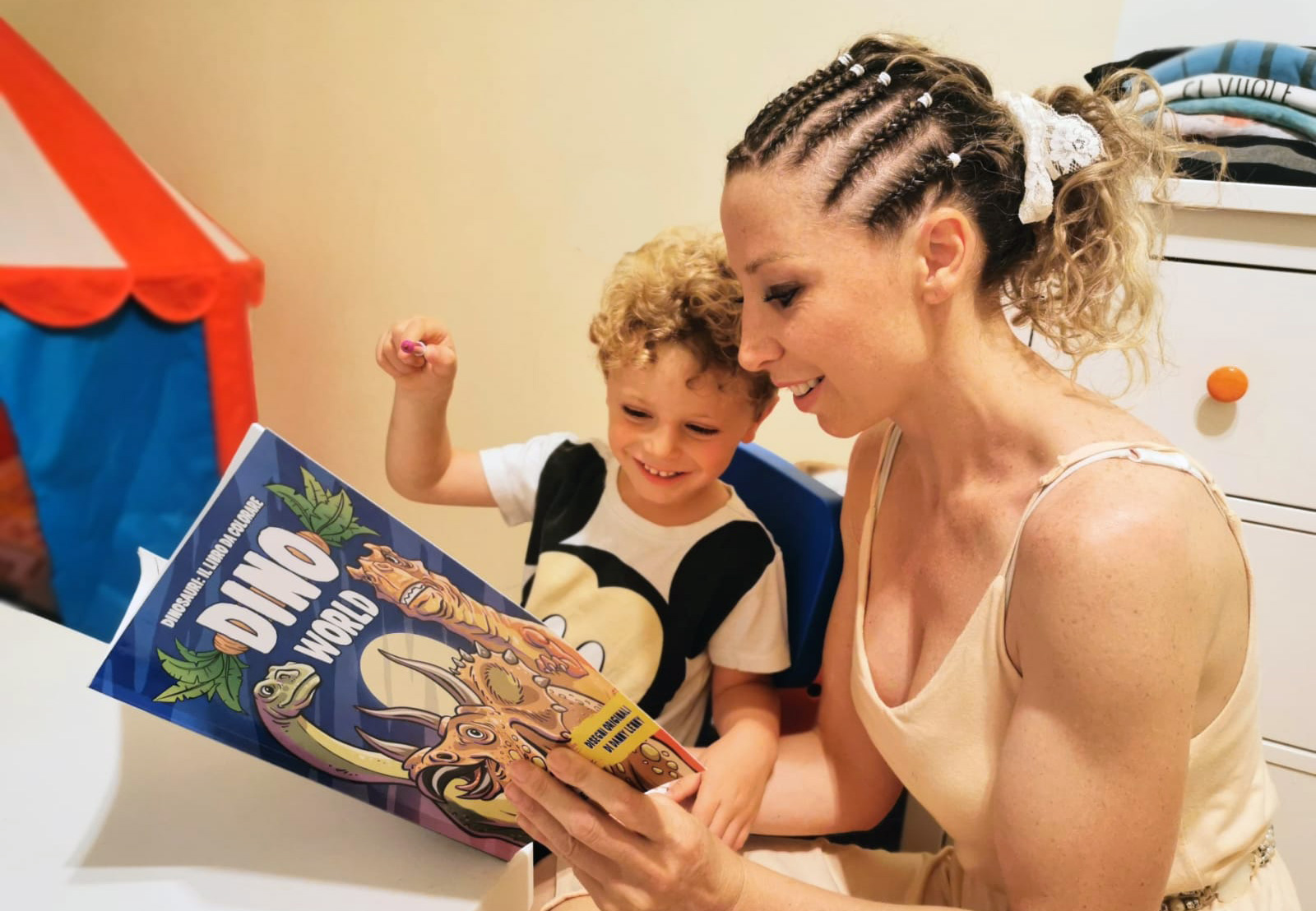In all age groups (in children too), coloring joins yoga and meditation as a fun way to improve mental and physical well-being; it is not only a relaxing form of expression that stimulates creativity but also leads to several other benefits which we will discuss in this article.
Some of these benefits are purely physical, such as the development of fine motor skills and pen control that come from coloring in large and small areas. Others are psychological and emotional, such as the sense of self-fulfillment and pride that children feel when they see the results of their work.
So, what are the benefits of coloring?
- Enhances fine motor skill development
- Improves hand-eye coordination, concentration and focus
- Develops spatial awareness
- Color Awareness, Recognition & Discernment
- Learning to plan
- Stimulates creativity and self-expression
- Confidence & self esteem
- Get used to respecting the rules
- Relaxes and releases emotions
- Quality time together and learning through fun
1) Enhances fine motor skill development
From birth to age eight, children continually refine and consolidate their motor functions and skills and integrate their skills across all domains.
Coloring is an activity that can help the development of motor skills: holding the pencil and learning to hold it correctly while coloring helps to develop the small muscles of the hands and also helps with the coordination in the grip and the muscle strength needed for other activities. Holding and using a crayon and controlling movements to stay within the lines requires the use of dozens of muscles located in the fingers, hands, and wrists.
Keeping pencils and crayons properly comes with practice. One of the funniest ways children can acquire this valuable practice before they start school is by completing activities in books.
So… does coloring help with handwriting too?
Sure it does!!!
2) Improves hand-eye coordination, concentration and focus
Coloring requires great attention and precision to stay within the lines and edges, this gives children the opportunity to develop coordination.
The child has to think and choose the color they will apply to certain elements on the page, imagine how the illustration will look when fully colored, and may even need to use a sharpener before they are done.
Each of these actions may seem simple for an adult, but they require a certain amount of mental commitment for a preschooler.
It contributes to better handwriting: there have been results of some studies that state that the earlier your child can grip and comfortably and confidently use a pencil, the greater control and confidence they have to naturally move this onto learning to write.
Since they are required to stay within a specific, demarcated area, they will need to stay focused on the space they need to fill and be more precise in their application.
This improves concentration: activity books and coloring books, which usually contain simple but fun tasks, can keep children absorbed long enough to help increase the period during which they can focus on one thing (aka mindfulness! See point 9).
3) Develops spatial awareness
Visual perception is an important skill to develop in young kids.
Coloring can help reinforce awareness of hand position and margins on the drawing to help children keep the crayon, pencil, or marker within a certain area.
4) Color Awareness, Recognition & Discernment
Learning to distinguish between one shade and another before setting foot in a school can be helpful.
Take the opportunity to teach children the differences between primary, secondary, and tertiary colors in a practical and fun way!
5) Learning to plan
Coloring is a great way for kids to start developing planning skills.
To complete a page you have to go through many steps, from which colors to use, in what order, and which texture to use in their color fills. All of this requires a ground plan and this will help them for the rest of their learning journey.
6) Stimulates creativity and self-expression
Coloring allows children to express their individuality through color selection and medium.
Give the kids the same coloring page and no two will be alike. It is interesting to observe how much pressure they apply, the color choices they make, and whether they color loosely or tightly.
Even if the expectation is that your child will stay within the lines, children’s coloring books are rarely used this way, and there’s nothing wrong with that. Many children see a coloring book as a blank canvas, despite the line drawings laid out in front of them.
Art is one of the best vehicles of self-expression available to a child.
The color and the material used become a tool to express one’s inner world; through the choice of color and the way in which he applies it, kids give voice to their emotions and feelings even when, for various reasons, they do not want and are unable to verbalize. Color reaches where words fail.
7) Confidence & self esteem
The coloring activity completes the drawing and the child learns to do it more and more accurately; being able to complete a task is very rewarding for the child.
Have you ever observed how proud a child is when he is able to complete a task on his own?
How many times, after finishing a drawing, did he rush to you with the sheet in his hand, exulting “Mom, look!”?
This helps him/her to believe in his/her abilities and improve self-esteem.
8) Get used to respecting the rules
Kids learn to stay inside the spaces, to respect boundaries and limits.
Under this perspective, they get used to respecting instructions and rules; sometimes they are free to color as they wish, other times they have to respect the instructions.
Thus, through the free and/or guided coloring activity, they experiment alternatively freedom and discipline, creativity and rigor.
9) Relaxes and releases emotions
Spending an afternoon coloring pictures and figures helps children relax and relieve stress.
Coloring is a therapeutic activity and it is no coincidence that children and adults are advised to color mandalas and coloring pages to manage stress.
Coloring is a relaxing activity for everyone!!!
Psychology confirms the usefulness of coloring to combat stress. When we focus on a manual activity such as coloring, the mind is relieved of the worries and thoughts that continually torment us for no real reason.
Dr. Joel Pearson, a brain scientist at the University of New South Wales in Australia explains: “You have to look at the shape and size, you have to look at the edges, and you have to pick a colour. It should occupy the same parts of the brain that stops any anxiety-related mental imagery happening as well. Anything that helps you control your attention is going to help.”
In particular, the activity of coloring stimulates the areas of the brain that deal with emotions while taking into account the importance of sight and coordination of movements.
So coloring is not only relaxing, but it is a real gym for the brain since childhood.
10) Quality time together and learning through fun
Spending some time together is the best way to make every day special.
Also, one of the most common complaints from children is that their schoolwork is boring.
By completing fun activities, children learn without even realizing it, and when children are small, this is often the best way to help them improve their skills without feeling pressured.
If you want a great children’s activity book for younger readers, why not start with one of our Smart Books?
We also have a FREE Coloring Book in PDF, which you can download and print now!

